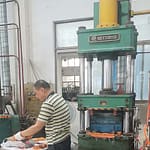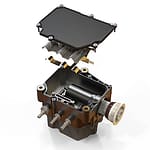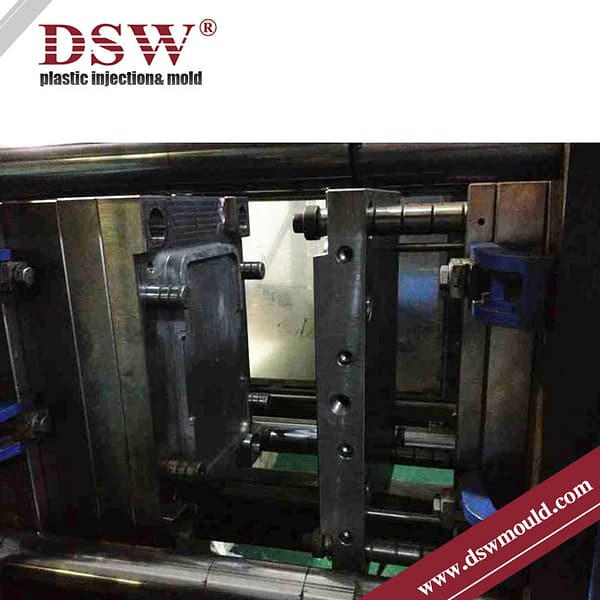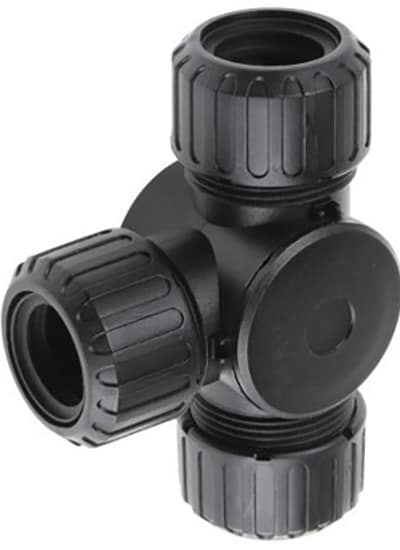What’s the Difference Between PA6 (Nylon 6) and PA66 (Nylon 66)?
Introduction
Nylon 6 (PA6) and Nylon 66 (PA66) are synthetic polymers known as polyamides. While they share similar chemical and physical properties, key differences make each suitable for different applications. This article explores these differences and provides detailed information on their properties, moulding conditions, and typical applications.
Nylon Properties
As polyamides, Nylon 6 and Nylon 66 share many core properties:
- High mechanical strength, stiffness, hardness, and toughness
- Good fatigue resistance
- High mechanical damping ability
- Good sliding properties
- Excellent wear resistance
- Good electrical insulating properties
- Good resistance to high-energy radiation (gamma and x-ray)
- Good machinability

Differences Between Nylon 6 and Nylon 66
The differences between Nylon 6 and Nylon 66 largely stem from their chemical structures. Nylon 6 is made from one monomer with six carbon atoms, while Nylon 66 is made from two monomers, each with six carbon atoms.
| Property | PA6 (Nylon 6) | PA66 (Nylon 66) |
|---|---|---|
| Melting Point | Low | High |
| Process Temperature Range | Wide | N/A |
| Impact and Stress Resistance | Better than PA66, withstands high impact and stress | Better stiffness, tensile modulus, and flexural modulus |
| Water absorption rate | Higher water absorption rate | Lower water absorption rate |
| Hygroscopicity | More hygroscopic | Hygroscopic |
| Modifiers | Glass, EPDM, SBR | Glass, EPDM, SBR |
| Shrinkage Rate (without additives) | 1% to 1.5% | 1% to 2% |
| Shrinkage Rate (with glass fibre) | 0.3% (higher perpendicular to flow) | 0.2% to 1% |
| Crystallinity | Less crystalline | More crystalline |
| Viscosity | Less viscous | Less viscous (but more viscous than PA6) |
| Chemical Resistance to Acids | Poor | Better than PA6 |
| Injection Pressure | 750-1250 bars | 750-1250 bars |
| Injection Speed | High (slightly lower for reinforced materials) | High (slightly lower for reinforced materials) |
| Mold Temperature Range | 80-90°C (20-40°C for wall thickness >3mm) | 80°C (≤40°C for thin-walled products, annealing required) |
| Drying Temperature & Time | 80°C for 16 hrs (or vacuum dry at 105°C for >8 hrs) | 85°C (or vacuum dry at 105°C for 12 hrs if humidity >0.2%) |
| Hot Runner Gate Size | Smaller than conventional | Smaller than conventional |
| Submarine Gate Size | ≥ 0.75mm | ≤ 0.75mm |
Impact of Mold Shrinkage
Nylon 6’s lower mold shrinkage adds reliability to the final part dimensions. Conversely, Nylon 66’s more significant mold shrinkage means the material’s shape changes more after processing, which must be accounted for in the design.
| Plastics | Glass Fiber Adding [%] | Mold Shrinkage Rate [%] |
| PA6 | 0.5-2.2 | |
| PA6+GF | 30~50 | 0.3-1 |
| PA66 | 0.5-2.2 | |
| PA66+GF | 30~50 | 0.5-1.5 |
| PA11 | 0.5-1.5 | |
| PA12 | 0.5-1.5 |
Water Absorption and Heat Deflection
Nylon 6 absorbs more water than Nylon 66 and has lower heat deflection temperatures. Therefore, Nylon 6 is not suited for applications exposed to water at high temperatures, whereas Nylon 66 would be a better choice.
Molding Conditions: PA6 vs. PA66
PA6 (Nylon 6)
- Drying: Due to its hygroscopic nature, PA6 requires special attention. If humidity is over 0.2%, dry in hot air at over 80°C for 16 hours. If exposed to air for more than 8 hours, vacuum drying at 105°C for over 8 hours is recommended.
- Melting Temperature: 230-280°C (250-280°C for enhanced varieties).
- Mold Temperature: 80-90°C. Higher mold temperatures improve strength and rigidity but reduce toughness.
- Injection Pressure: 750-1250 bars.
- Injection Speed: High, slightly lower for reinforced materials.
- Runners and Gates: Due to the rapid solidification of PA6, gate location is crucial. The gate aperture should be at least 0.5*t (t = the thickness of the plastic product). Smaller gate sizes are preferable for hot runner systems. For submarine gates, the minimum diameter should be 0.75mm.
- The gate should be placed to ensure uniform filling of the mold cavity. This helps avoid air traps and provides an even distribution of material.
- Avoid placing the gate in areas that may create weld lines or weak points in the final product.
PA66 (Nylon 66)
- Drying: Drying is not necessary if the material is sealed before processing. If the storage container is opened, dry it at 85°C. Vacuum drying at 105°C for 12 hours is recommended if humidity exceeds 0.2%.
- Melting Temperature: 260-290°C (275-280°C for glass-reinforced products). Do not exceed 300°C.
- Mold Temperature: 80°C. Lower temperatures (<40°C) for thin-walled products require annealing to maintain stability.
- Injection Pressure: 750-1250 bars.
- Injection Speed: High, slightly lower for reinforced materials.
- Runners and Gates: These have similar considerations as PA6, with the gate aperture not less than 0.5*t and submarine gates having a minimum diameter of 0.75mm.
Typical Material Applications
Nylon 6 and Nylon 66 are both polyamide materials known for their high strength, durability, and resistance to wear, making them popular choices in engineering applications.
Nylon 6
- Sleeve and slide bearings
- Wear pads
- Support and guide wheels
- Cable sheaves
- Hammerheads
- Scrapers
- Gear wheels
- Seal rings
- Cutting boards
- Track plates
Nylon 66
- Friction bearings
- Radiator caps
- Tyre ropes
- Other high-performance applications are exposed to higher temperatures and require long-term durability.
Choosing Between Nylon 6 and Nylon 66
The choice between Nylon 6 and Nylon 66 depends on the specific requirements of the application:
Nylon 6:
- Characteristics: Lightweight, high impact, and stress resistance.
- Aesthetic: Lustrous finish, easy to dye.
- Applications: Automotive, industrial, and military applications, such as gears, firearm components, and engine compartments.
- Limitations: Not suitable for high-temperature water exposure due to higher water absorption and lower heat deflection compared to Nylon 66.
Nylon 66:
- Characteristics: High performance, superior stiffness, good tensile and flexural modulus.
- Applications: Ideal for long-term use in high-temperature environments, such as friction bearings, radiator caps, and tire ropes.
Conclusion
Understanding the differences between Nylon 6 and Nylon 66 is crucial for selecting the suitable material for your application. Consider your project’s mechanical properties, environmental conditions, and specific requirements to make an informed decision.













